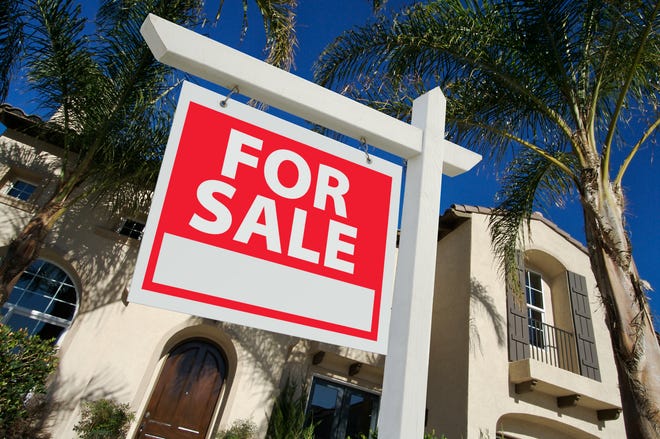[ad_1]
This is the first column in a two-part series.

To say that residential real estate is in a state of flux may very well be an understatement. In a press release issued July 20, the National Association of Realtors reported that existing-home sales “declined for the fifth straight month.” More specifically, sales dropped by 5.4 percent between May and June and fell by 14.2 percent year-over-year. NAR also reported that the nationwide inventory of existing homes is on the rise.
Just nine days later, the U.S. Census Bureau released statistics showing that new-home sales fell 8.1 percent between May and June, and by 17.4 percent year-over-year. It is interesting to note that new-home statistics are based on the date purchase agreements are signed, while existing-home figures count closed sales for which purchase agreements were signed 30 to 60 days in the past. The reports also revealed that price appreciation is slowing in many parts of the country.
Las Cruces is not immune from the effects higher mortgage interest rates and other economic factors are having on sales of new and existing homes, townhomes and condominiums. According to an Aug. 2 report from the Las Cruces Association of Realtors, leading indicators show to what extent Las Cruces-area sales are affected. Take, for example, the percentage of the asking price received by sellers. The list-price-to-sales-price ratio achieved in July was 1.5 percent below the percentage achieved in June and one-half percent below the percentage achieved one year ago. Other statistics confirm that change is definitely underway.
The number of days on the market, which reflects the number of days between the day the listing was activated and the day the purchase agreement was signed, grew by 50 percent month-over-month and 80 percent year-over-year. The absorption rate, which measures the number of months it would take to sell out the inventory at the current sales pace, grew 9.5-percent month-over-month and 12.2-percent year-over-year.
The percentage of unsold inventory is also on the rise, increasing by 40 percent between June and July and by 10.5-percent year-over-year. LCAR also reported that the dollar volume of the homes sold in July fell 8.9-percent below the dollar volume reported in June and 15.1-percent below the total sales volume reported in July 2021. July’s dollar volume was $60,332,774.

There’s no doubt that inventories are growing, sellers are receiving a lower percentage of their asking prices, and it’s taking longer to find a buyer. But what about values? According to national statistics, it appears they may have reached their peaks in many areas of the country. Is the same true for Las Cruces? Have prices reached their peaks in many areas of the valley? The answer is complicated and depends on the type of property, its condition, and its location. While there aren’t enough buyers in the marketplace to purchase our entire inventory, there are more than enough to purchase the small number of “best homes for the money” our inventory has to offer. In that realm, sellers continue to hold an advantage.
There is one statistic that, on its own, doesn’t establish a trend but could point to what’s ahead for local home values if it continues. That statistic is the median sales price. The median sales price is where half sold for more and half sold for less. While July’s median sales price of $289,500 was 5.6 percent higher than the median sales price reported in July 2021, it was 3.4-percent below June’s median price of $294,300. Should that trend continue, it would indicate that local home values are on the decline.
So, let’s assume local home values are softening. What strategy or strategies should sellers employ to achieve the highest possible price for their properties? I’ll have the answer for you in next week’s column.
See you at closing.
Gary Sandler is a full-time Realtor and president of Gary Sandler Inc., Realtors in Las Cruces. He loves to answer questions and can be reached at 575-642-2292 or Gary@GarySandler.com.
Others are reading:
[ad_2]
Source link
